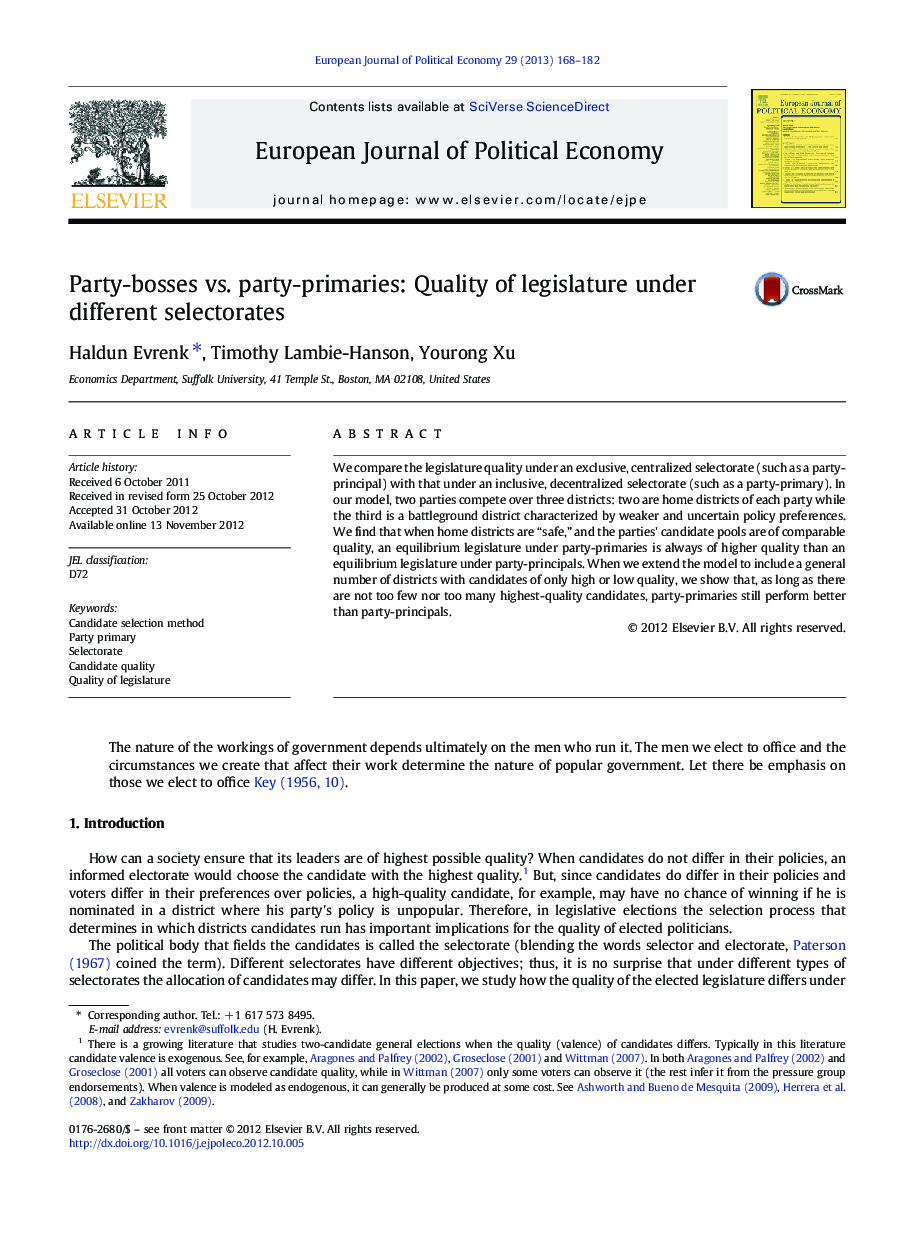| Article ID | Journal | Published Year | Pages | File Type |
|---|---|---|---|---|
| 5068200 | European Journal of Political Economy | 2013 | 15 Pages |
We compare the legislature quality under an exclusive, centralized selectorate (such as a party-principal) with that under an inclusive, decentralized selectorate (such as a party-primary). In our model, two parties compete over three districts: two are home districts of each party while the third is a battleground district characterized by weaker and uncertain policy preferences. We find that when home districts are “safe,” and the parties' candidate pools are of comparable quality, an equilibrium legislature under party-primaries is always of higher quality than an equilibrium legislature under party-principals. When we extend the model to include a general number of districts with candidates of only high or low quality, we show that, as long as there are not too few nor too many highest-quality candidates, party-primaries still perform better than party-principals.
⺠We ask how the quality of legislature varies with the candidate selection method. ⺠We consider centralized and exclusive, and decentralized and inclusive methods. ⺠There are three districts, two are safe district and one is a battleground district. ⺠There are high, medium and low quality candidates in each party. ⺠Under the second method, the equilibrium quality of legislature is higher.
